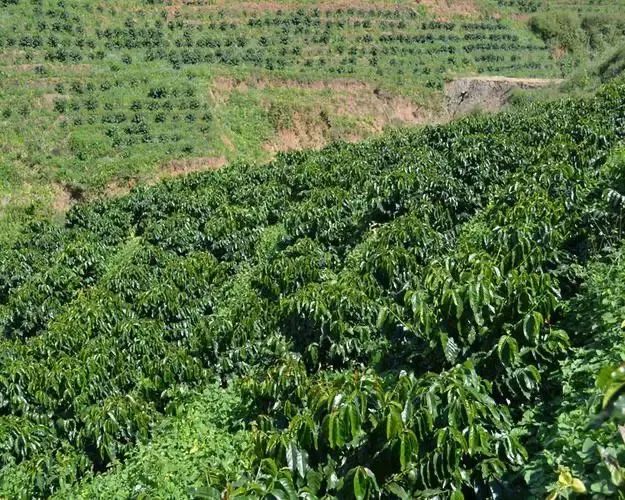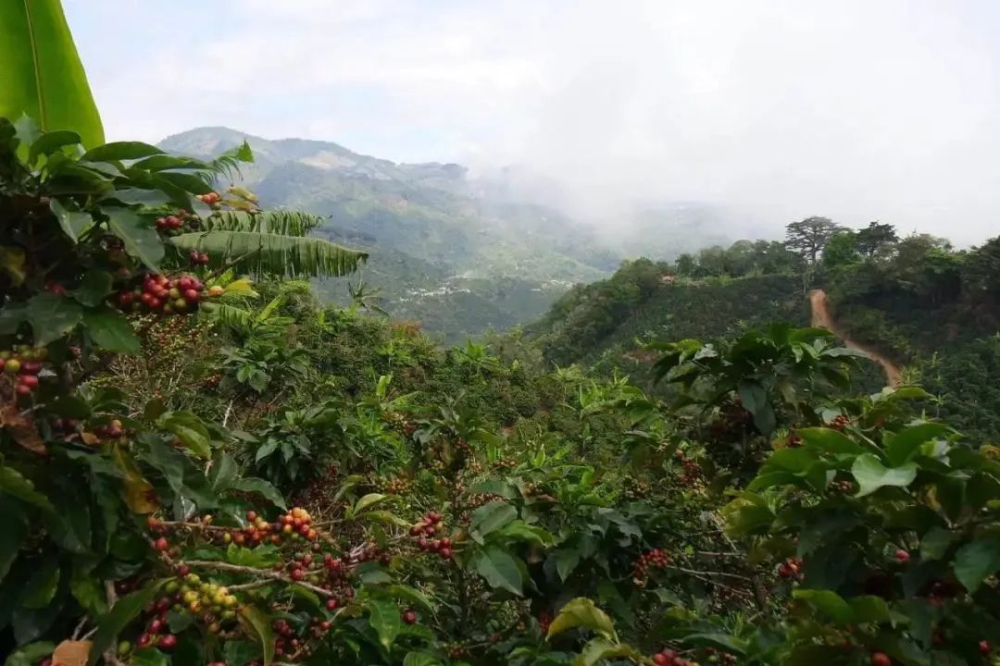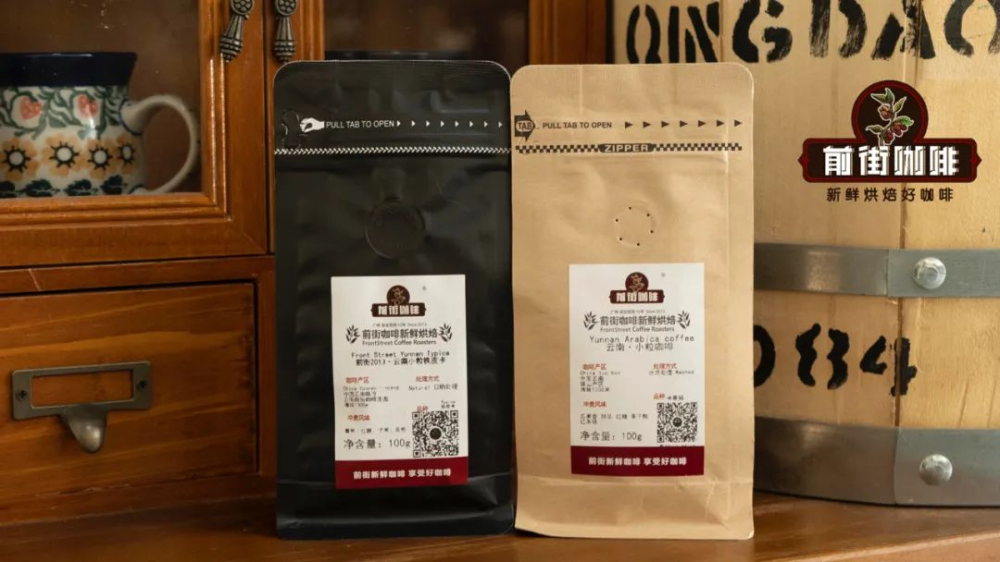What's the difference between Yunnan Xiaogu? What is the difference between Yunnan Xiaolii in the past and now? Is Katim Arabica?
With the improvement of the quality of Yunnan coffee beans, the menus of most boutique coffee shops have more options for Yunnan beans, among which they are generally referred to as Yunnan small grains. This also makes people wonder, what kind of coffee will be called small coffee? What is Yunnan small grain coffee?

What is a small grain of coffee?
Small-grain coffee is another name for Arabica, and Arabica is called small-grain coffee mainly because it is the smallest of the three native species of coffee (note: it is the size of coffee fruit, not the size of coffee beans in the core of coffee fruit).

At this time, the big guys roughly know that Yunnan small grain coffee refers to Arabica coffee grown in Yunnan, right?

Yes! But there are some differences between Yunnan small grains in the past and Yunnan small grains now.
Different Yunnan small grains of coffee
At the beginning of the 20th century, coffee was introduced into Yunnan Province in two ways by French missionaries from Vietnam, planted in Zhukula Village in Binchuan County, and taught local villagers how to grind and brew. On the other hand, the border people of the Jingpo nationality were introduced into Nongxian Village in Ruili County. Because the red fruit of the coffee tree was pleasing to the eye, the coffee tree at that time was planted in the residents' courtyard as a landscape for people to enjoy. At this time, the coffee has not yet formed a certain understanding in China, and the planting area is relatively small.

Until early 1952, experts who were doing social investigation identified that the red fruits planted in farmers' courtyards were "small-grain coffee" mostly produced in South America, and then bought a large number of fresh fruits and brought them back to Lujiangba in Baoshan City to begin breeding and breeding. and set up the first small-grain coffee planting base in our country.
Due to Yunnan's superior geography and suitable climate environment, the cultivation of small-grain coffee has been a great success, and it has evolved a unique flavor of "strong but not strong, fragrant but not bitter, slightly fruity", which is well received by the international market. At this time, at the stage of developing the planned economy after the founding of the people's Republic of China, China existed as a coffee supply producing area for the Soviet Union and Eastern European countries (Cuba is sugar), which promoted the development of Baoshan Coffee, with a planting area of more than 50,000 mu. At this point, Yunnan small grain coffee became famous. At this time, the Yunnan small grain refers to the Arabica species such as tin card and bourbon grown in Yunnan.

The good times did not last long. With the deterioration of Sino-Soviet relations in the 1960s and 1970s, the role of coffee beans in the Soviet Union no longer existed, and the coffee growing industry in Yunnan began to fade out slowly. The name of Yunnan small-grain coffee began with this background.
Even though the "old varieties" of Yunnan, which are rarely seen on the market, have been replaced by "new varieties" that have inherited the title of "Yunnan small-grain coffee".

In the 1980s, the world's major coffee industry suffered a large-scale reduction in production due to iron rust, and the main coffee demand side always needed to develop new coffee producing areas. In 1988, Nestl é hoped to buy a batch of cheap coffee beans to make instant coffee, so it vigorously promoted the development of coffee agriculture in Yunnan. Katim 7963 was introduced from the Portuguese Coffee Rust Research Center (CIFC), and different Katim was introduced to try to breed in the following years, but the output of Katim was never as good as the original 7963.
These katims are originally made for disease resistance and as instant raw materials, so there is no great demand for flavor, so that the discussion of flavor is almost inseparable from the less-than-ideal descriptions of low acid, nuts, cocoa and fishy smell. In exchange for ultra-high output and strong disease resistance, under the same level of management, iron pickup is about 1/3 of Katim's output, which is why the prices of many tin cards and bourbon beans are higher.

Katim Katim is a hybrid of Kaddura and Tim, in which Kaddura is a pure Arabica species, and Tim is a natural hybrid of Arabica and Robusta, so from a genetic point of view, Katim, which has an Arabica bloodline of 3 and 4, naturally belongs to the Arabica species. And precisely because it has the Robusta gene of 1Compact 4, it will produce more fruit than the average Arabica, and it is easy to grow and not easy to get sick, and its disadvantages are also obvious. that's why the book on boutique Coffee refers to coffee from Asian regions with a devil's tail.

This wave of substitution reached the best part of the peak in the price of Brazilian coffee beans before 2010-2011, when Yunnan coffee beans reached an all-time high but quickly disappeared. Today, Yunnan's Katim accounts for 95% of Yunnan's total output. Yunnan Xiaomi has completely inherited the original Yunnan old variety Arabica, and has become synonymous with Yunnan Katim. Today, the farmers who still insist on growing tin pickups, bourbon and other "old varieties" are more due to the mistakes made in this variety change.

-END-
Front Street Cafe
No. 10 Baoqian street, Yandun road, Dongshankou, Yuexiu district, Guangzhou, Guangdong province

Important Notice :
前街咖啡 FrontStreet Coffee has moved to new addredd:
FrontStreet Coffee Address: 315,Donghua East Road,GuangZhou
Tel:020 38364473
- Prev

Cudy is out to sea to open a branch in Korea?!
▲ Click to follow | Daily boutique Coffee Culture Magazine Coffee Workshop on August 4th, a netizen posted that he saw a Coffee in Seoul, South Korea, which is currently under renovation and is not sure whether it is authentic or not. Not long after the content was released, netizens who indicated that they knew about it replied that the store was indeed opened by Kudi in Seoul.
- Next

What's the difference between hand-brewed coffee v60 KalitaMagna wave filter cup? Does water injection need to be changed?
Some time ago, Qianjie shared a way to cook a good-looking powder pit. There are new buddies in the backstage private message Qianjie. "is the circle of the fan filter cup also round?" "what do fan-shaped filter cups need to pay attention to in water injection?" In order to take care of those who have just touched hand-brewed coffee and don't know anything about all kinds of filter cups.
Related
- What effect does Italian American coffee with filter paper have? Will coffee taste better if it is put on filter paper at the bottom of the powder bowl?
- What is the color difference in coffee beans? What are the characteristics of honey processed coffee beans? Why are the anaerobically treated coffee beans uneven in color?
- How does novice Xiaobai quickly get started and make coffee? Newbies learn to make coffee by hand and share the specific steps and process process!
- Costa tea has a shelf life of 100 years?! Expert: Unable to verify
- It's a huge uproar! American milk addition was rejected by Manner employees?!
- Mocha pot coffee bean recommendations| How fine and how much powder should be used for grinding? What parameter ratios do I need to use to make milk with Mocha pot coffee?
- What are the characteristics of the world's top ten coffee beans treated with Costa Rica honey? How to make black honey kadura from Tarazhu Pilon Processing Plant taste good?
- How to make deep-roasted coffee? What grinding water temperature does authentic Jamaica Blue Mountain No. 1 coffee use to brew it well?
- Selected high-grade rose summer coffee flavor tasting guide Why Panama rose summer has the aroma of flowers and fruits
- What equipment does a novice Xiaobai need to buy to learn to make coffee? Filter cup electronic scale bean grinder manual flushing pot purchase guide

